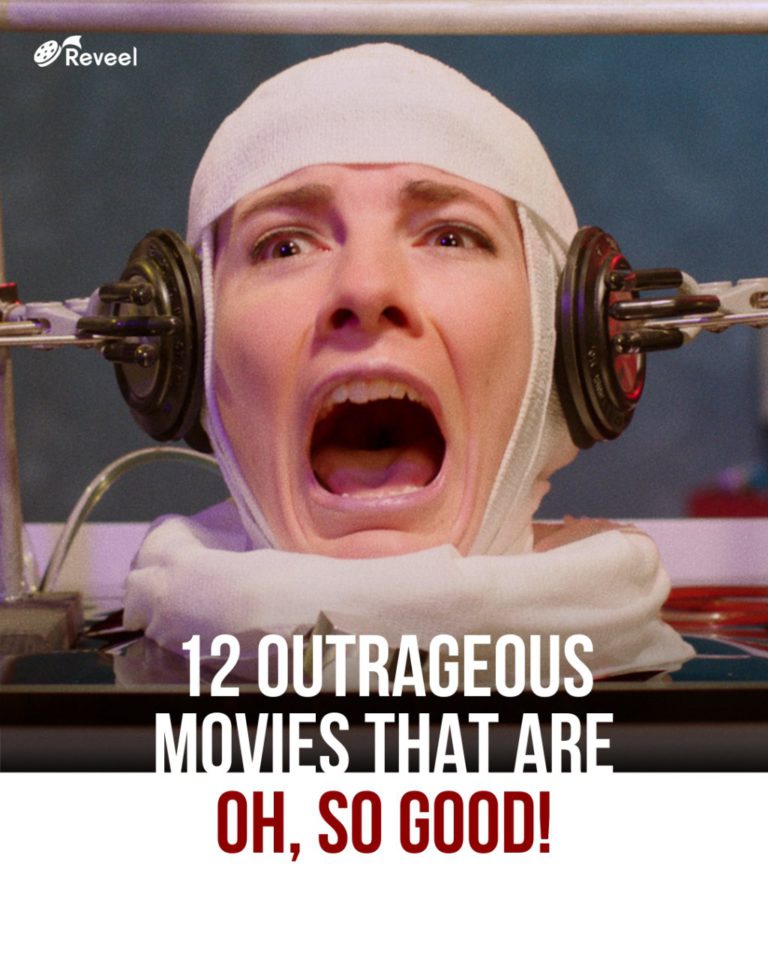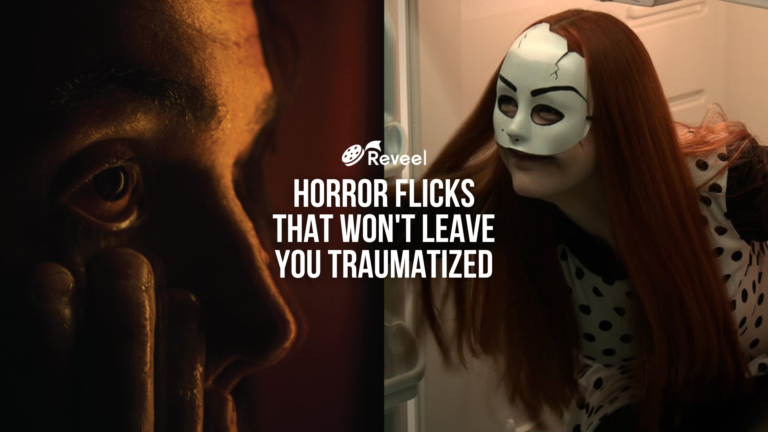Julie, a southern white girl, falls in love with a former slave of her father’s in the middle of the American Civil War and is faced with the challenge of her life. Watch Letters to Freedom on Reveel
Period pieces are not the typical indie film made on a low budget, but Joshua Williams from CAVID Productions created a historical feature film on his first-ever full length directorial debut. The result? A convincing and compelling love story set in the middle of the American Civil War. We sat down with the filmmaker for a chat about his creative process for Letters to Freedom (2023) and his impressive filmmaking tactics.
1. In your own words, can you tell us what Letters To Freedom is about?
Letters to Freedom is a Civil War-era film. A historical drama about unconditional love and self-sacrifice. You have these two characters who get caught in a love story that wasn’t supposed to happen.
Julie, who’s a Southern white girl, falls in love with a former slave of her father’s and he escapes and joins the Union army to fight for his freedom and the freedom of others. In these trying times, they both are forced to make decisions to test who they really are and to test their love for each other. To really know and understand what unconditional, genuine love means in the midst of persecution.
2. How did you come up with the idea? Why did you feel that this story needed to be told?
I came up with the idea for this film seven years ago. At that time, I was in search of what love really was, what genuine, true love really was. In the midst of this search, I was reading the Bible and stories of people’s testimonies of their life decisions. I thought about this idea of what it looked like to be in a situation where that genuine love is tested. I started researching history and interracial couples and I was intrigued by a lot of the stories I was coming across. How people were willing just to sacrifice and follow their convictions to do what’s right in the midst of persecution. Not being afraid to stand on what they believe is right.
In a lot of ways, it does remind me of the story on the cross about what Jesus did. He could have backed down and given up any time but his love was greater so he suffered and died for the sake of the world to be saved so I believe this story needed to be told for that very reason. Love is taught to be self-centered, self-pleasing, and self-seeking, but not often do you hear love being spoken or taught to be selfless, to die to yourself, to put others before yourself.
3. From a filmmaking perspective, what were some of the biggest production challenges for convincingly capturing the look and feel of the Civil War era?
Oh man, this was a tough film to make because it just was something that was outside of my scope and time period. I knew if I was going to make this film, I had to face it head-on and just not overthink anything.
I had to just go for it and try to execute, without even having a budget. So the biggest challenge was just trying to find the visual elements and trying to create a story in a film that felt authentic with those limitations. Another big challenge when making this was just being able to take care of everybody who helped out. I wanted to take care of everyone as much as I could and to support everyone who was supporting the production.
We filmed at the colonial Pennsylvania plantation and we experienced what it was like to not be surrounded by technology other than the film equipment we had on set but that was basically the only technology we had.
Because the place we filmed was so historically preserved, there were no heaters, air conditioning, or bathrooms. We had to work within the weather. We had extremely hot days that were tough and we had cold days. We had to go up the hill to use the bathroom as a crew. So stuff like that was challenging, but everyone on set who worked on this film were troopers and they really put in work and sacrifice. I couldn’t have done it without anybody who helped out on set. I couldn’t have asked for a better cast and crew to work with.
4. How did you go about striving for historical accuracy in your characters’ costumes, props, settings, and dialogue?
I tried to do it, and be as historically accurate as I could. That was something that I was super passionate about. Of course, again, there were limitations because of the budget, but again, I don’t like using budget and a lack of resources as an excuse. Like, I want to make it as accurate as possible. The costumes, I did a lot of research on the costumes.
Karina, who played Julie, did an amazing job doing her own research for the character. For the soldiers, I looked online. I went to military stores to find the blue Union coats. I went to Gettysburg shops a lot in Pennsylvania to find a lot of the Civil War-era kind of props and costumes. Some of it was also makeshifts. Some things we didn’t have the budget for so we had to find a way to replicate them as much as we could with what we had.
As far as the setting goes, we filmed at this local plantation called Colonial Pennsylvania Plantation. Everything was preserved from the 1700s, which was pretty amazing. When looking for a lot of settings, like historical places, I think a huge element was trying to find the artistry in these places. How can we make these settings look like art pieces? Finding places that look visually pleasing and just eye-popping.
5. According to IMDb, this is your second film you’ve written and directed. What was the biggest learning curve you encountered when directing your first full-length period piece feature coming right after a short film?
That I can’t do everything on my own. I know as filmmakers, we tend to do that a lot. When we’re passionate, we tend to think and believe that we can handle everything on our own.
My short films were such smaller scale. So in a lot of ways, I was able to do a lot of the behind-the-scenes work and editing on my own and get the job done. This was my first time really needing help.
I had an AD for the first time. I was able to have people focus on just lighting and helping out on set, even catering, and it was a lot that I had to learn. I had to learn how to let go and receive the help that I was getting.
6. How did you approach creating this compelling love story that viewers root for in a short amount of time?
When I was writing this story, I wanted the audience to feel like they were a part of this adventure with Julie. It wasn’t just a love story. It was an experience. It was going through Julie’s life choices and her journey. What is Julie going to do next? She was almost an unpredictable character and I liked that because I felt like that would help give the audience a sense of going on a ride with these characters. When I wrote each character, I wanted them to have a motivation, a want, and a desire.
Julie had a strong desire. Seth had a strong desire. Gabriel, who was the antagonist, had a strong desire. Joseph had a strong desire. Everyone, I wanted everyone to have just one goal that they focused on. That way we could see how all of these different goals and visions intertwine to create this conflict. So when I wrote Gabriel as the villain, I didn’t want him to come across as a villain.
Typically, one thing I realized when you know somebody who disagrees with you, most people don’t see themselves as villains and sometimes they aren’t. It’s just, this is how they see things and they believe that they’re right and they’re following their convictions in this area and believe that they’re doing what’s right. Then you have the other side who feels the same way. So when these two ideas of people who don’t see themselves as villains, but as good people, clash, what does that look like?
7. Here’s a fun one. If you had the ability to create a film about any time period, which one would you choose?
World War II, the 1940s. I’ve had a huge desire to make a D-Day film. There’s something about the stories in D-Day that I think are very powerful. Storming the beaches of Normandy, heading to the front doors of Nazi German territory to rid France of Nazi control, and also to free the Jews who are in captivity and being tortured by Nazis. There was just something humane and inspirational about that story. There are so many stories that happened on D-Day on the beaches alone that a lot of Hollywood and a lot of people didn’t really tap into yet.
I just always had a huge desire to make my own version, my own D-Day, and tell inspirational stories of that day. Just the heroism that took place and the sacrifice and the love.
Julie, a southern white girl, falls in love with a former slave of her father’s in the middle of the American Civil War and is faced with the challenge of her life. Watch Letters to Freedom on Reveel
All-Time Popular Blogs

12 Horror Movies So Ridiculous – Ridiculously Good
We all know the allure of a good guilty pleasure flick — movies so ludicrous and outlandishly executed that we can’t help but be bowled over by the audacity. Welcome...
Read More
Best Free Filipino Movies You Can Watch Right Now
“There’s always a Filipino somewhere” is a well-known fact, and it’s true even in streaming platforms. Of course we have some right here in Reveel. From the adrenaline-infused streets of...
Read More
Movies about The Dark Side of Hollywood and Fame
The darker side of Hollywood—the side rife with scandal, exploitation, and the unyielding pressure to remain in vogue—is a tale as old as cinema itself. Yet, these stories never fail...
Read More
Reveel Interviews Dima Taran: The Filmmaker Behind The Animated Short ‘Laniakea’
What if we are alone in the universe? This question is at the core of the short film Laniakea. Originally created as a college project by Dima Taran, the film...
Read More
5 Best Animated Short Films To Watch For Free On Reveel
Sometimes the best stories aren’t the longest, they are the shortest. Short films have perfected the art of telling a captivating story in just a few minutes and animated shorts...
Read More
Reveel Interviews Jason Ragosta: The Filmmaker Behind The Short ‘Boy In The Dark’
Most, if not all, children had night terrors growing up. Some would hide under the covers. Others would yell for their parents. Kid-version Jason Ragosta, screenwriter and director, decided to...
Read More









